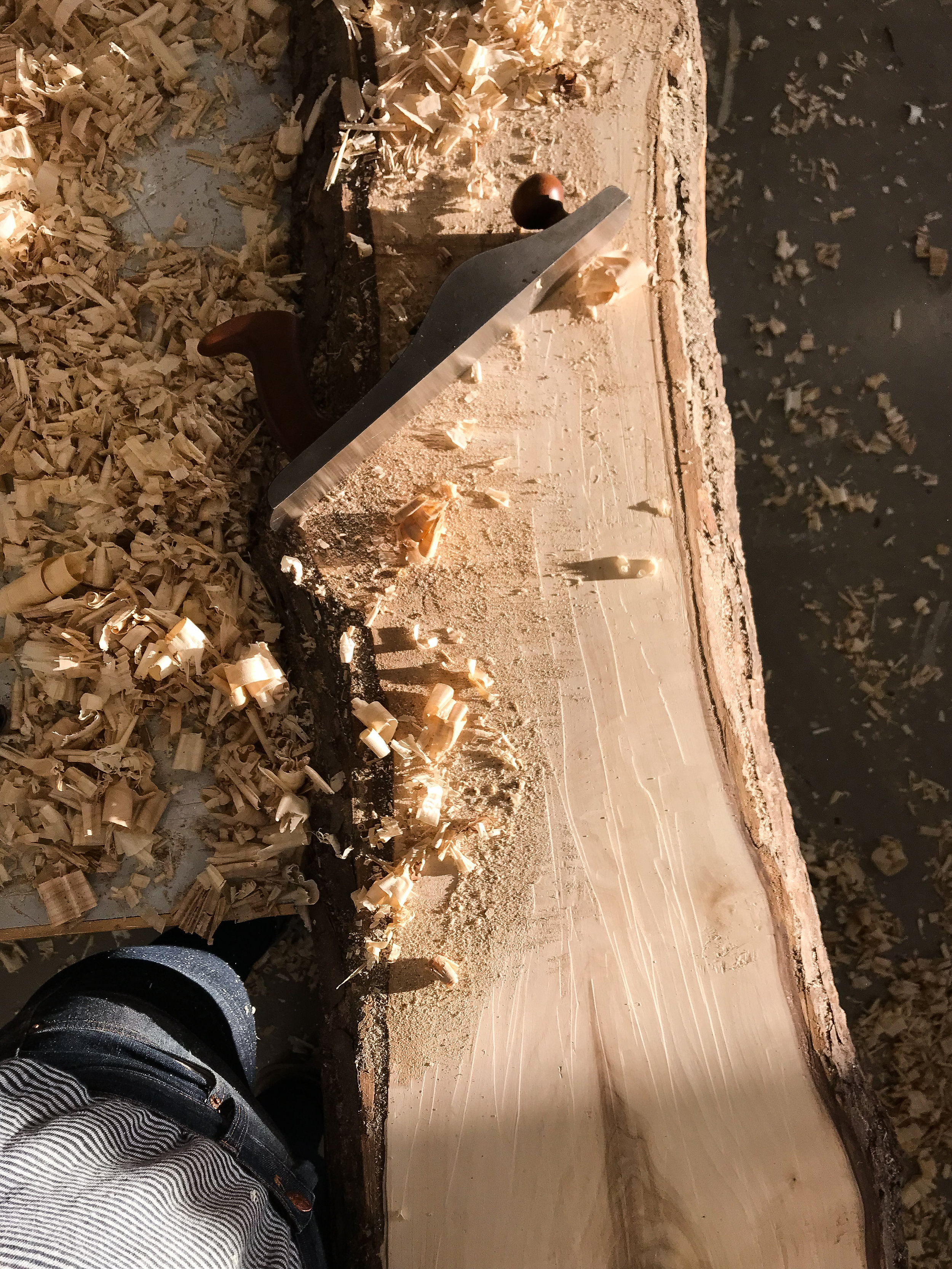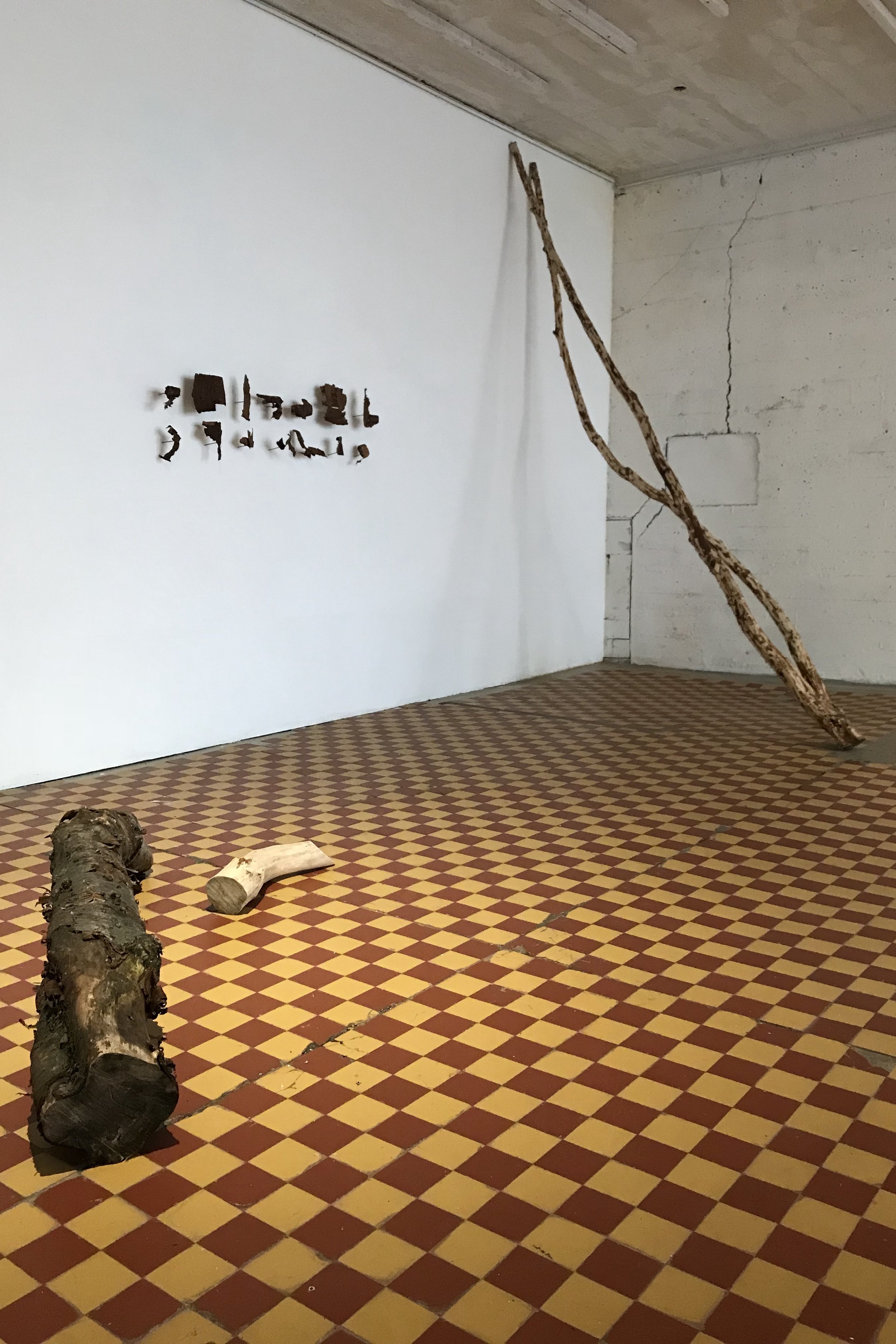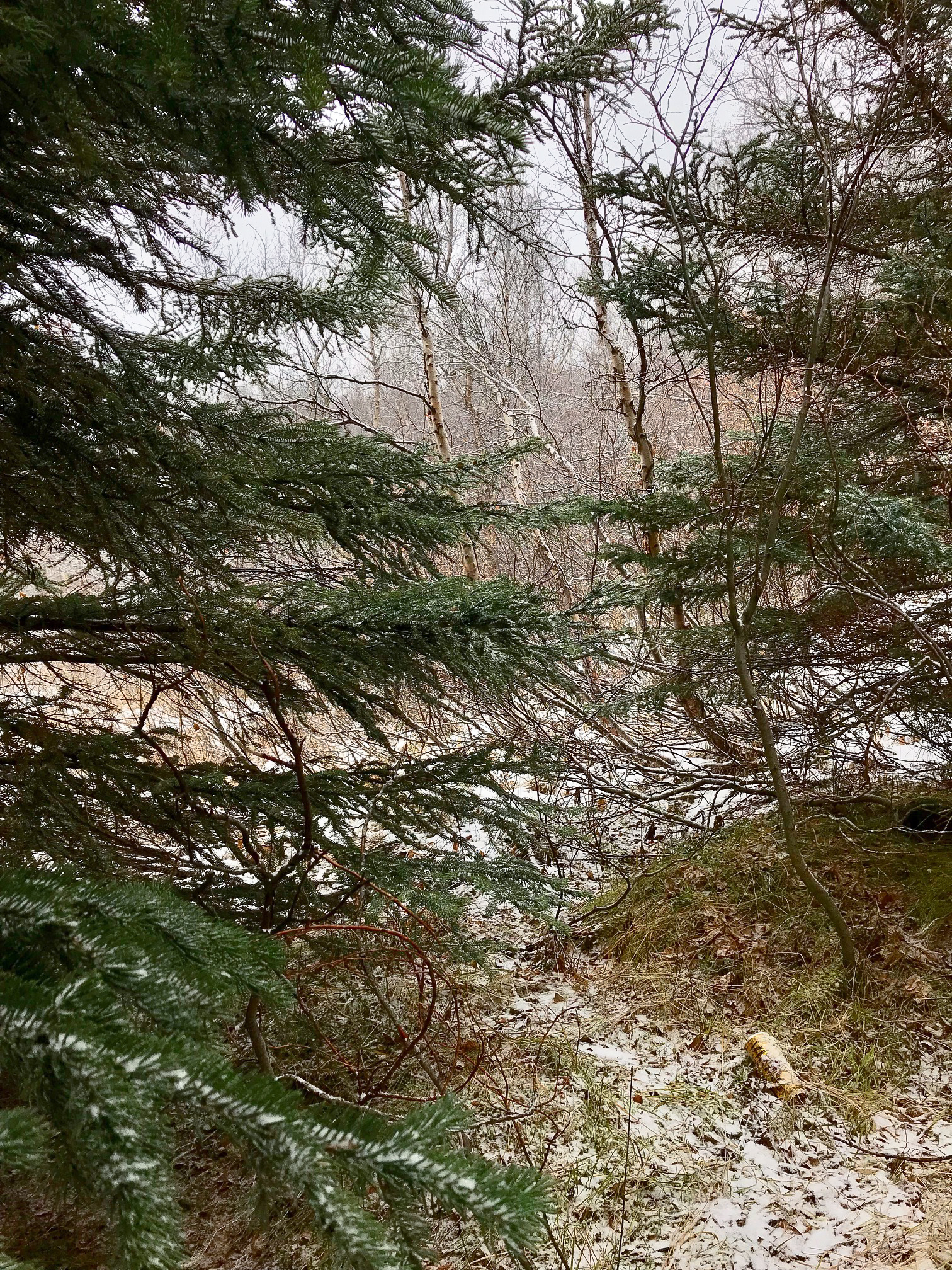ARBOREAL
Sculptural and photographic work from See the Forest for the Trees – Contextualizing Iceland’s Arboreality, Rýmd Gallerí, Reykjavík, 2019. This work is part of a research project conducted with grant funding awarded by Rannís, Icelandic Centre for Research, 2019.
Exhibition text: A forest is a prodigious resource – an environmental architecture emblematic of our interdependency, and equally our discontinuity with the natural world. The relationship between the nature of being human and that of an arboreal being is signified in our language however absent from the phenomenal order of nature. Arboreal: of, or of the nature of, trees; tree-dwelling. Linguistic advantage enables an intimate relation to the natural world whilst concurrently estranging us though objectified associations; a word signifies an abstract concept that refers to a concrete object. My sculptural investigations consider signification, the caretaker and a beneficiary, in observation of the nexus between ecological stability and economic viability in the context of the reclamation of the Icelandic forest.
Presently, the forested enclaves of Iceland cover approximately 2% of the island nation compared to settlement in the 9th century when an estimated quarter of the land area was covered in native birch woodlands. Native and non-native arboreal species, delineated by the forested areas, represent a diversity of identities: native birch, Norwegian spruce, Alaskan cottonwood, Russian larch, Siberian pine, European beech among others. To see the trees within the context of their origins frames the forest as an archetypal metaphor embodying the heterogeneity of a displaced yet networked society. By placing various stages of afforestation in adjacent dialogues, I hope to allude to the interconnectedness of human being and arboreal being.
Similarities within our own body architectures to those observed, morphologically and biologically as overt counterbalances of tension–grace and gravity–fragility, aims to provoke empathetic criticality in the value of forest in a land where trees are a scant minority. Hierarchal systems of inclusion and exclusion are questioned through allegorical and analogous readings into the forest as a paradoxical construction – verisimilitude obscures. A forest is a dwelling, an abode to abandon social constructions that require justification in our cacophony of humanness – to see the forest for the trees is an exercise in our arboreality conscientious of our dependence upon her resource as a material embodiment, and equally her primordial wisdom.
A tree is nobility
selfless caretaker, enabler of breath – evolution
humility under a canopy of wise branches – a truth of our being
leaves quake, symmetries shift – inclusion
surface study: trunk, bark, limb, leaf – microcosmic phenomenon
a transference of energy, a balance in relation, identity – an oracle of dwelling
dynamic still: heartwood, immanent light, sequester of darkness – patient in resilience
being, expectant of nothing – unconditional.
Left to right: Ladder & Code, 2019, birch timber felled in Heiðmörk, a managed nature preserve near Reykjavík established in 1949. Tree bark is removed from the timbers and used to construct the code; interior of bark faces the viewer, arranged in two rows of seven representative of the cardinal virtues and vices.
© 2008–2025 katrina jane











